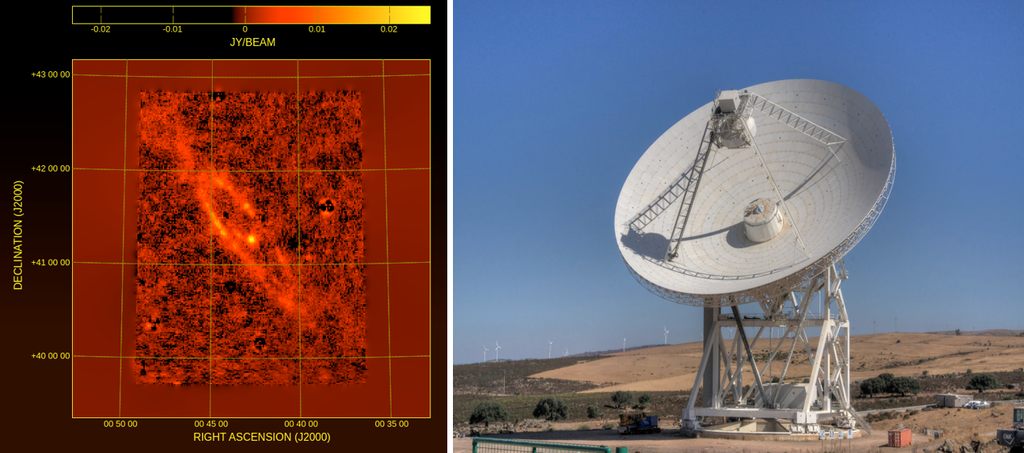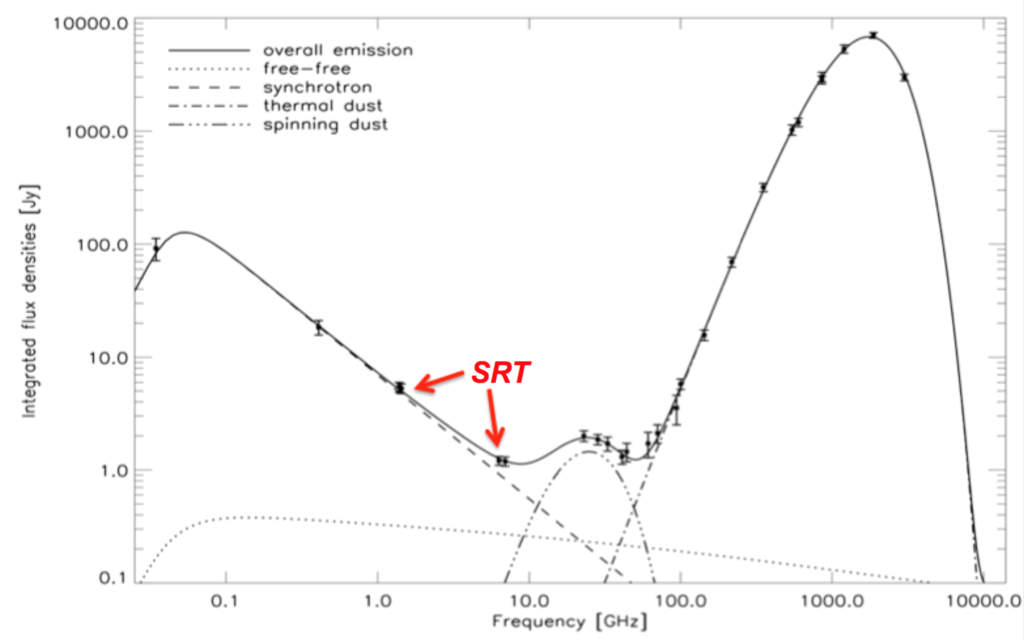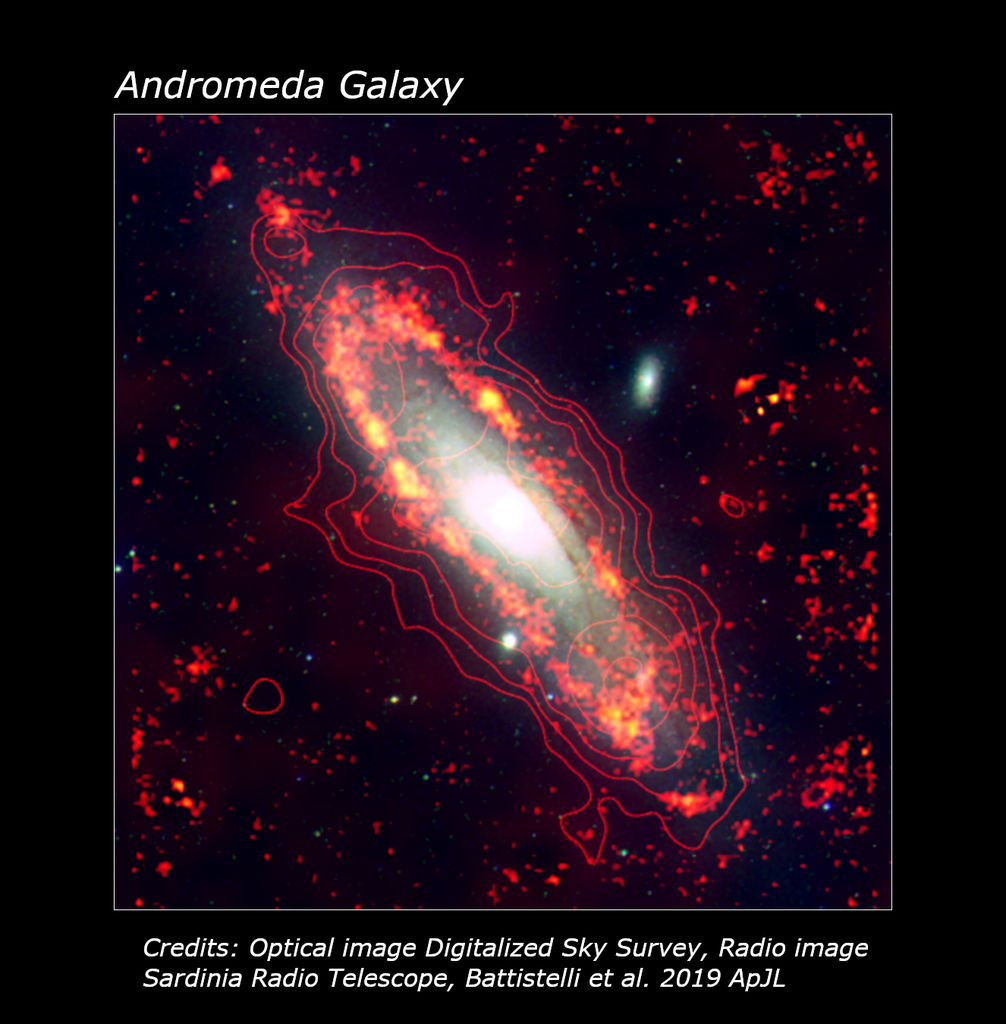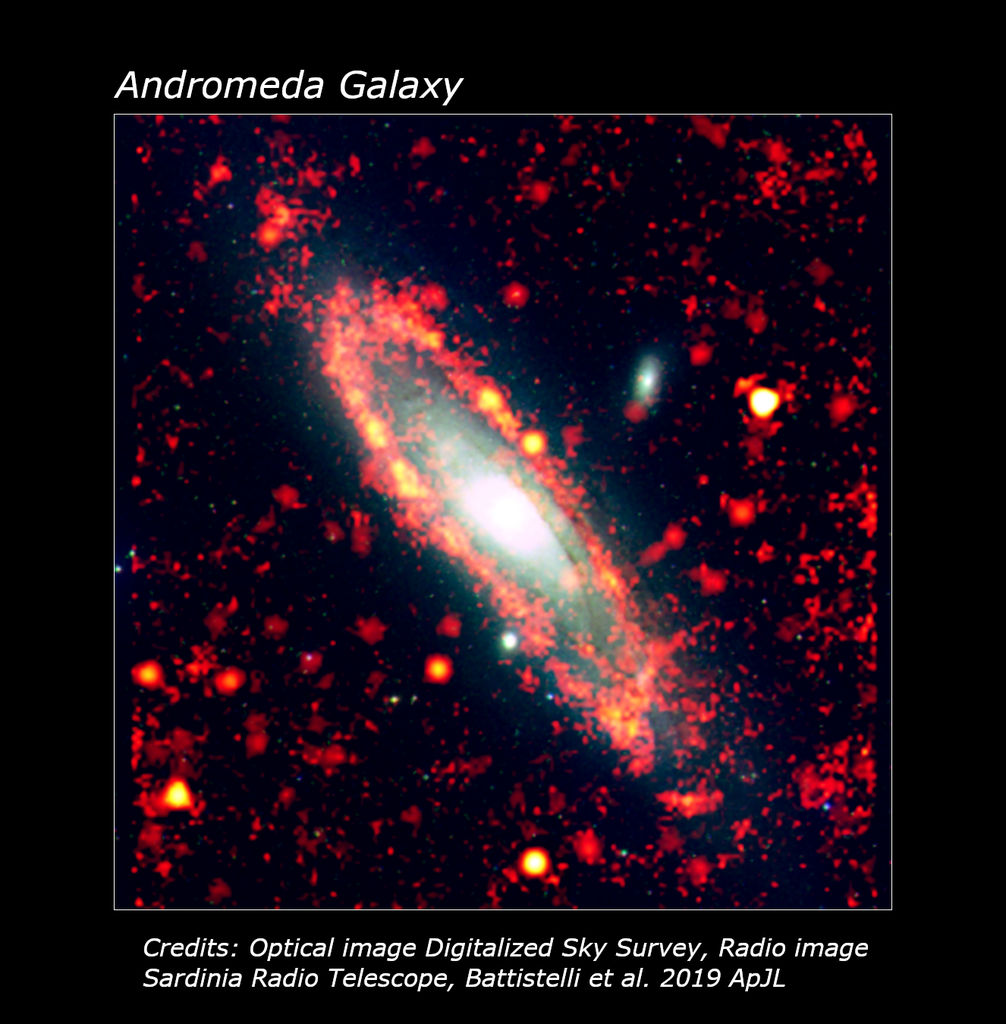
Anomalous Wave Discovered Coming from Andromeda
A new study coordinated by Sapienza University has revealed an anomalous emission of microwaves coming from the Andromeda Galaxy via astrophysical observations carried out with the 64-meter Sardinia Radio Telescope (SRT), through research of excellence in radio astronomy managed by the National Institute of Astrophysics.
The Andromeda galaxy is the largest in the local group, an aggregate of over 70 galaxies to which our Milky Way belongs. Very well studied in all the bands of the electromagnetic spectrum, Andromeda, however, had never been thoroughly investigated in the microwave one.
To shed light on this aspect is an international team attended by the Department of Physics of Sapienza, the Astronomical Observatory of Cagliari (Inaf), the Instituto de Astrofisica de Canarias (Spain), the University of British Columbia (Canada), the California Institute of Technology (USA) and the Institute of Radio Astronomy of Bologna (Inaf). The work, published in the journal Astrophysical Journal Letter, carried out a complete mapping of the Andromeda galaxy in the microwaves, at a wavelength of 4.5 cm and at a frequency of 6.7 GHz.
It has been observed that, in addition to the classical emissions linked to the interactions between the interstellar material and the Andromeda magnetic field, the Galaxy presents "an anomalous wave" in excess that cannot be explained except with new radiation mechanisms. For this emission they are linked to the rapid rotation of small grains of interstellar dust (Spinning Dust).
"In 2015 Already, the Planck satellite had seen this type of emission with a low statistical significance", explains Elia Battistelli of the Sapienza Physics Department and project coordinator, "but now it is certain that such a radiation is actually present in the global issue of the Andromeda galaxy."
"Given the size of Andromeda," explains Matteo Murgia from Inaf, "observing the galaxy with the necessary level of detail is very difficult but, thanks to the characteristics of the Sardinia Radio Telescope, it was possible to create images of various square degrees ensuring adequate sensitivity and resolution angular."
These results, which allow to observe Andromeda in its entirety for the first time and to analyze effects so far studied only in our Galaxy, will allow us to acquire more information on the Andromeda star formation, its magnetic field and the possibility that laser emissions are present in the microwaves caused by the presence of water molecules.
References:
Strong evidence of Anomalous Microwave Emission from the ux density spectrum of M31 – Battistelli, E. S., Fatigoni, S., Murgia, M., Buzzelli, A., Carretti, E., Castangia, P., ... & Govoni, F. - The Astrophysical Journal Letters 2019, 877, L31. DOI: https://doi.org/10.3847/2041-8213/ab21de
Further Information
Elia Stefano Battistelli
Department of Physics, Sapienza University of Rome
elia.battistelli@uniroma1.it







